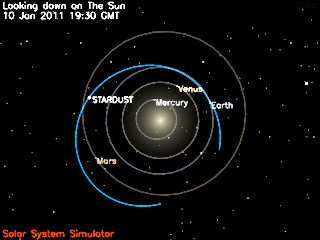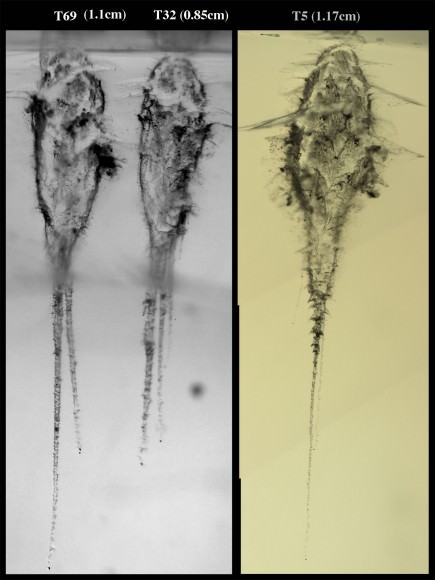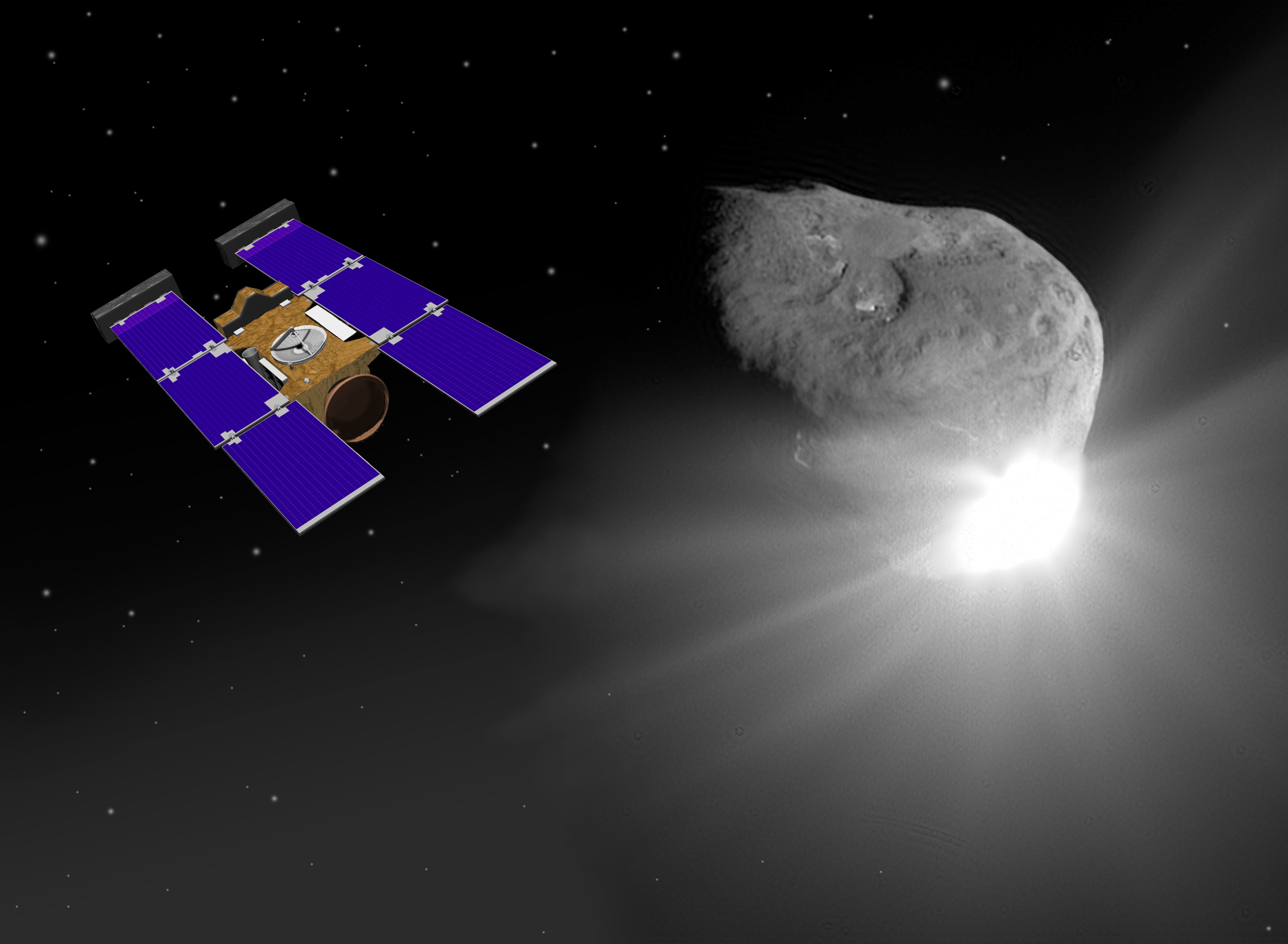[/caption]
35 Days and Counting !
NASA’s re-purposed STARDUST- NeXT spacecraft is set to flyby Comet Tempel 1 at a distance of just 200 km on Valentine’s Day – February 14, 2011 at about 8:36 p.m. PST. The encounter marks the first time that a comet has been visited twice by probes from Earth. The revisit also provides the first opportunity for up-close observations of a comet both before and after a single orbital pass around the sun.
Comet Tempel 1 was first visited by NASA’s Deep Impact comet smashing mission in July 2005. Deep Impact delivered a 375 kg projectile into the path of Temple 1 that resulted in a high speed impact directly into the comet nucleus.
The cosmic collision of about 10.2 km/sec (22,800 miles/hour) ejected a cloud of debris that was studied by the Deep Impact spacecraft as well as an armada of orbiting and ground based telescopes. The impact crater itself was obscured by the debris cloud. The spacecraft did find the first evidence of surface ice on a comet instead of just inside a comet. Stardust NExT will take images and spectra of Tempel 1 and hunt for the impact crater.

According to the latest update posted at the STARDUST- NeXT mission website on Jan 6; “The spacecraft is healthy and began the New Year with a cold boot to clear a memory address latch-up that had occurred late in 2010. This cold boot clears the latched line and resets the memory to its factory settings.”
The reboot was completely successful and sets the probe up to accomplish the missions science objectives. On board optical navigation cameras were scheduled to take a new set of images on Jan. 6.
The update further states that the mission plan has now changed substantially to accommodate two new challenges. First the estimated fuel remaining on board is lower than expected. Second, the optical navigation cameras failed to detect the comet in the prior set of images in December.

The optical cameras provide the key information to precisely navigate the probe to the comet. “Current estimates show that the comet may not be bright enough to detect with the Navcam until the latter half of January,” states the update.
As a result of the lower fuel estimate the remaining trajectory maneuvers (TCM’s) have been adjusted to January 31, February 7, and February 12. No science images will be taken until the last 7 days prior to the Feb 14 encounter.
Caption: Video of Comet Tempel 1 as NASA’s Deep Impact comet spacecraft delivers a projectile which smashed into the comet in July 2005. NASA’s STARDUST- NeXT probe is set to flyby Comet Tempel 1 on February, 14, 2011. The probe will collect numerous high resolution images of the coma and nucleus and hunt for the elusive 2005 impact crater.
The team states that these changes will provide “positive fuel margin through encounter …. and places the TCMs at times best able to accommodate late detection of the comet”.
The engineering team is building new approach sequences to accommodate these significant changes to the approach and Comet Tempel 1 encounter on Feb 14.
A briefing by the science team will be carried live on NASA TV on Jan. 19 at 2 PM EST
The Stardust spacecraft accomplished its original goal of flying through a dust cloud surrounding the nucleus of comet Wild 2 in Jan. 2004. The probe successfully gathered particles of cometary material during the flyby, The comet particles were returned to Earth aboard a sample return capsule which landed in the Utah desert in January 2006.



I just love that day! GO STARDUST- NEXT!
Not long to wait till the fly-by takes place! What will Stardust-NeXT discover? It’s the 2nd visit this comet will have received a visit from a probe from Earth! 🙂